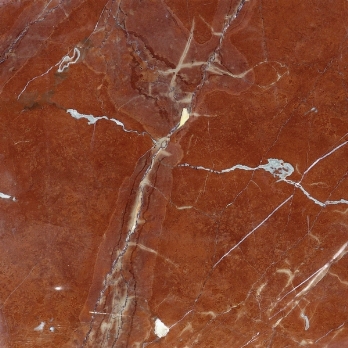Rosso Collemandina Exclusive
Petrografic name (according EN 12407): Brecciated dolomitic limestone
Macroscopic description: A compact lithotype with a nodular appearance that is dark ruby red in colour with close stylolitic joints that are dark red and in places skin pink or grey. White veins occur that are submillimetric in thickness.
Les suivantes donnèes techniques n'offrent qu'une indication gènèrale des vèritables caractèristiques du matèriel. Etant donnè qu'il s'agit d'un produit naturel, nous vous conseillons de bien vouloir rèpèter les tests afin de confirmer et ajourner les donnèe mêmes. La sociètè décline toute responsabilitè pour tout usage abusif.
Physical mechanical characteristics
| STANDARD | U.M. | MEAN VALUE | ST. DEV. | |
 EN 13755-08 EN 13755-08 |
Water absorption at atmospheric pressure | % | 0,08 | 0,04 |
 EN 1936-07 EN 1936-07 |
Apparent Density | KG/m3 | 2700 | 5,2 |
 EN 1936-07 EN 1936-07 |
Open porosity | % | 0,2 | 0,14 |
 EN 12372-07 EN 12372-07 |
Flexural strength | |||
| (in natural conditions) | MPa | 17,3 | 5,5 | |
| (EN 12371-03 exposed to 48 frost cycles | MPa | 16,9 | 8 | |
 EN 1926-07 EN 1926-07 |
Uniaxial compressive strength | MPa | 94 | 40,9 |
 EN 14231-04 EN 14231-04 |
Slip resistance (honed finishing) | |||
| (dry) | USRV | 62 | 3,2 | |
| (wet) | USRV | 30 | 3,1 | |
Block and slab characteristics
Average size of blocks: 2,50 x 1,40 x 1,40m.
Slabs are preferably cut against the grain or perpendicular to the grain, i.e. the hard way or the easy way.
 Du découpage de blocs
Du découpage de blocs  Lavoration de surface
Lavoration de surface
 Du découpage de blocs
Du découpage de blocs  Lavoration de surface
Lavoration de surface
Microscopic description according to EN 12407 e EN 12460
| A brecciated sedimentary lithotype in a neomorphism and dolomitization condition. The material is composed of clasts, the dimensions of which vary from mm to dm, composed of micrite with widespread dolomitic crystals. The micrite is partly spotted by hematic microgranulations that generate areas of a deep red colour. Immersed inside are recrystallised bioclasts including foraminifera, fragments of crinoids and bivalves together with relicts of bioclasts that cannot be determined. There are both fractures calcitized from sedimentary rocks and in places fractures recemented by dolomite, calcite and hematic opaque minerals. The clasts are immersed in a macrocristalline calcitic and dolomitic cement (< 300 µm) associated with intrabasinal lithoclasts with abundant fragments of bioclasts and granulations of hematite and limonite. |




